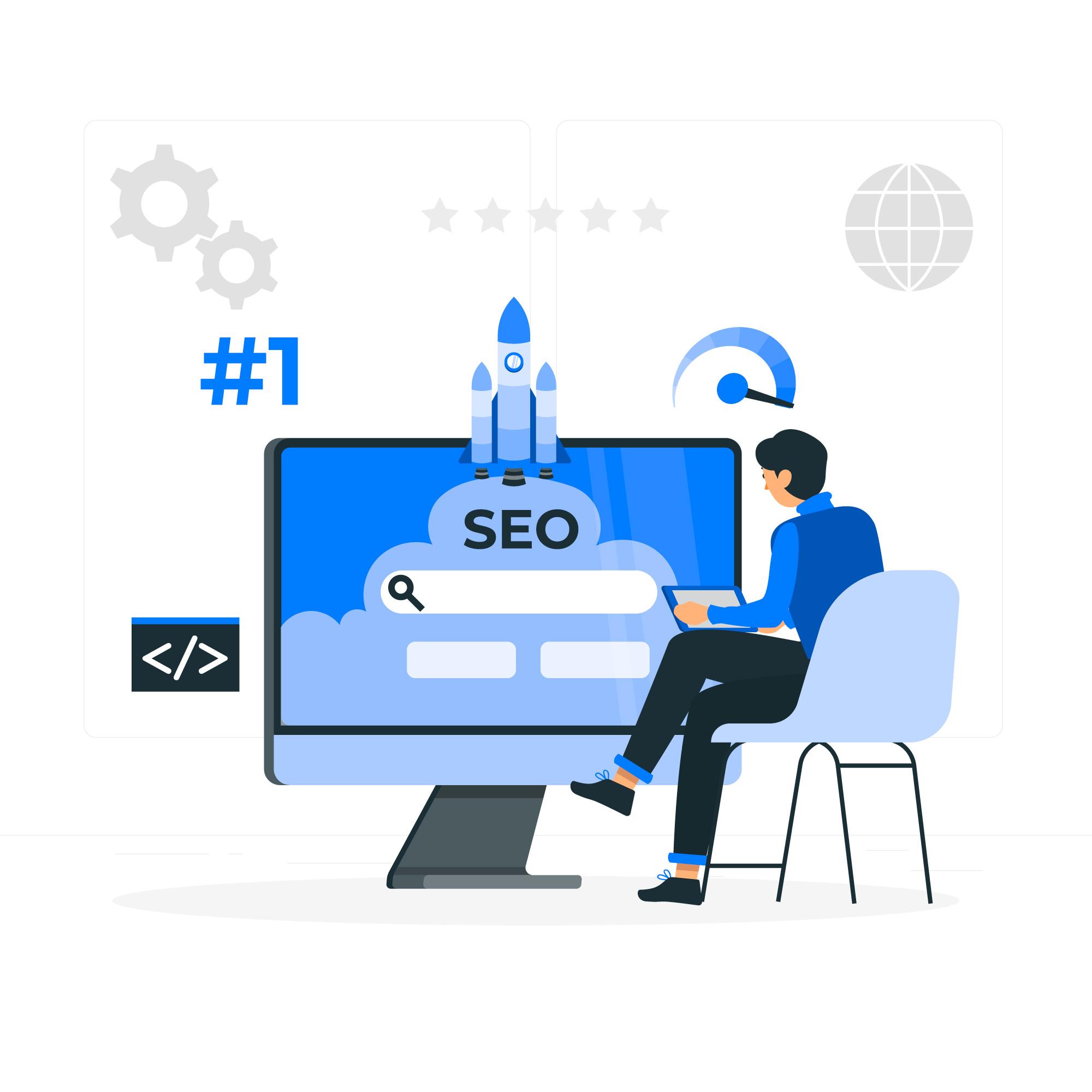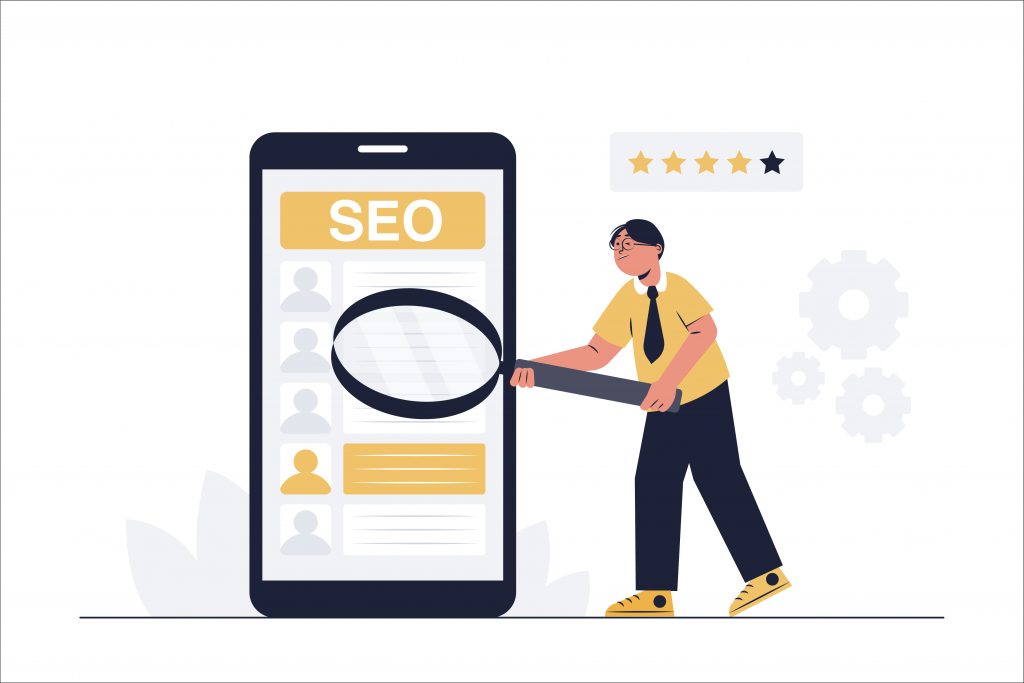Top 7 tips for SEO Friendly Website Design
DesignStartupTechnology

The significance of developing an SEO-friendly website cannot be overstated. When designing a website for your business, integrating SEO optimizations into the process is crucial to boost your visibility on search engines, particularly Google's SERPs. Because Google accounts for more than 90% of global organic search traffic, following SEO website design tips becomes essential to make the job of search engine bots easier and facilitate swift and easy ranking.
Given that a significant number of users click on organic search results, it becomes critical to leverage search engine optimization (SEO) strategies to enhance your site's ranking in search results. By investing in a search engine friendly website design, you can ensure that your website ranks higher in search results and attracts a larger volume of organic traffic. Implementing SEO-friendly practices not only enhances your website's visibility but also creates a user-friendly experience, resulting in improved user engagement and better overall performance.
What exactly is search engine friendly website design?
Search engine optimization (SEO) web design is a method of creating and constructing websites that are optimised for search engines. Making a website SEO-friendly involves allowing Google and other search engines to efficiently crawl each page, interpret the information, and index it in their database.
What are the benefits of SEO Friendly Website Designing?
The best approach to reap the benefits of SEO is to use it to develop and optimise your website. The following are some of the advantages of having an SEO-friendly website design:
-
Cost-effective
The display of search results is free and simple. You do not need to spend money on obtaining a good search result ranking, unlike paid advertising and other marketing tactics. Furthermore, when an ad's funding runs out, it's taken down from the internet, resulting in a drop in visitors to specific websites. Your rating and online traffic, on the other hand, can be maintained without spending money with the help of SEO.
-
Increase traffic
The use of SEO tools and methods can aid in the growth of your website's traffic. This rise is a clear benefit of SEO-friendly tactics, and it can be simply maintained so that you continue to reap the benefits. The amount of visitors directed to your site as a result of higher search result ranks is increasing at a steady and consistent rate. As a result, you can expect to see a steady increase in online traffic as well as an increase in revenue.
-
Competing with your business rivals
Top-ranking search results in Google and other search engines are frequently regarded as more reliable than other results. Being at the top establishes you as the finest in your sector, indicating that your website is relevant and meets the demands of your visitors. A website that appears frequently at the top of the search results page is more likely to be noticed by Internet users. As a result, SEO can help your company achieve more success by increasing brand trust and recognition.
-
Aiming for business growth
Your sales and profitability can both benefit from SEO. It has the potential to bring in new clients while also keeping old ones. It can also give you a variety of options for promoting your products online, allowing you to reach out to your target audience and potential buyers more effectively. With all of these advantages, an SEO-friendly website aids you in your business progress and future growth.
-
Consistent results
Unlike sponsored advertisements, SEO strategies yield long-term and consistent results. As a result, you may rest confident that a shortage of funds will not affect your website traffic or consumer sales. If you achieve the top of the rankings and retain it on a consistent basis, you will continue to benefit from your SEO-friendly website and will remain in the top positions.
Many of the techniques that can help you rank higher in search engine results pages (SERPs) will also help you improve the visitor experience. Google awards points for things like user-friendly websites that can be accessed from any device. Visitors will stay on your site longer if you use good SEO design. It allows you to stay in Google's good graces, ensuring that your site is easily found in the future.
Top 7 Tips for seo friendly website design
-
To connect with mobile users, adopt responsive design.
When you're trying to establish an SEO-friendly website design, it might be difficult to figure out which features are most important for your company's performance. One of the most important aspects of your company's success is responsive design. If you want to make a website that is SEO-friendly, you must include responsive design.
Your website may adjust to whichever device a person is using thanks to responsive design. They'll get the version of your site that's ideal for their device, whether they're on a mobile phone, tablet, or desktop.
So, why is responsive web design such an important component of an SEO-friendly website? Because each device has a different screen size, your website must adjust to match their devices. These users will have a negative experience on your site if you do not adjust for mobile devices. You can also hire a web design agency for this purpose.
Consider using a smartphone to visit a desktop version of your website. On the gadget, your website would be scaled down to a fraction of its original size. It would be difficult for users to read the text, view the graphics, and click on the links.
Your audience will have a negative experience. Your visitors will fast leave your site and go to a competitor's site that is better optimised. Because it offers a positive signal to Google, you want leads to stay on your site for longer. Because Google believes your site is relevant to the user's search intent, it will rank your website higher in the search results.
Ultimately, SEO-friendly websites are important because they keep visitors on your page for longer, which helps your website rank higher in search results. Integrate responsive design into your website's design to make it more optimised. It will assist you in creating a more SEO-friendly website design that will allow you to keep leads on your page for longer periods of time.
-
Create content for your website that focuses on important keywords.
The production of content is an important aspect of your website. You can help boost traffic to your site and get leads to engage with it by creating content. It not only helps you establish yourself as an expert in your field but also allows you to target lucrative keywords that will drive qualified leads to your page.
You must first choose a topic before you can begin writing material. When it comes to choosing a topic, keyword selection is crucial. Your website will appear in relevant search results as a result of keywords.
Conduct keyword research to locate the right key terms. This research enables you to identify suitable key phrases for your SEO listing and assess their value.
Long-tail keywords help your content achieve higher results. Because these key terms are more particular, your website will receive more valuable traffic.
After you've decided on your phrases, you'll need to decide on the best format for your material. You can deliver important information to your audience through blogs, videos, infographics, and eBooks.
You can begin writing your material when you've decided on a format. You'll want to make sure your information is both instructional and simple to comprehend. It's crucial to remember that you're developing content for your target audience, so write, direct, and design content that's simple to comprehend.
You can help your company appear in more relevant search results by using keywords in your content. You may bring more visitors to your website by appearing in more relevant search results, and your site will rank higher in the search results.
Integrate keywords into your pages to make your website more SEO-friendly. It will assist your pages in appearing in the appropriate search results, hence improving their overall performance. One of the many ways to improve your website SEO-friendly is to use keywords.
-
To assist search engines in better understanding your pages, optimise header tags.
Start by optimising your header tags if you want to learn how to make your website SEO-friendly. The heading tags that identify the start of a section are known as header tags. This section's title is a header!
Integrate your most critical keywords into your headers to begin optimising them. You should use your most significant keyword in the title of your page.
Because this integration aids Google in comprehending the context of your page, it's critical to include your most significant keyword in the title to ensure you rank for that term.
The importance of headers on your page cannot be overstated. They inform your audience on what will happen next and what they should anticipate seeing.
Headers should not be used to emphasise phone numbers or facts. Headers are used to split up parts and make it easier for your audience to understand what you're saying.
Start by generating a heading structure for your pages that is easy to understand for your leads if you want to build an SEO-friendly website. You'll keep leads on your website longer if your pages are well-organized and easy to read.
-
To aid search engines in finding and indexing your content, use internal linking.
Don't forget to focus on internal linking on your site as you learn more about how to make your website SEO-friendly. Internal linking is a component of SEO that is frequently disregarded. This technique aids search engines in finding and indexing fresh pages on your website.
You could have fantastic pages on your website with significant content, but Google might not be able to find them. You must assist Google in finding all of the pages on your website. Internal linking aids Google in finding and indexing these pages in search results.
Use internal links correctly if you wish to use them on your website. To have your pages indexed, you don't want to add links to them at random. The pages must be related to the topic and anchor text used on the page.
Use robust and meaningful anchor text to experience success with internal linking. The context of your link is hinted at by the anchor text. Internal links can help Google locate and index more pages on your website, which will help you construct an SEO-friendly website.
-
To increase site clicks in search results, optimise meta descriptions.
The title of the page appears first when you search on Google. A tiny paragraph description appears beneath the title, giving you a sneak preview of the page. This brief paragraph will serve as your meta description.
Your meta description should be meaningful and as long as possible. Before three dots show and your text is cut off, you have roughly 150 characters for your meta description. This implies that material beyond the first 150 characters will be hidden, and your information may be cut off at an awkward or essential point in your description.
It may take some time to craft the perfect meta description that is both descriptive and fits inside the character limit, but the effort is well worth it because it will help you gain more hits and online traffic.
-
To retain visitors on your site for longer, prioritise readability.
It's easy to become lost in the design and technical parts of your website while creating an SEO-friendly website design and optimising your page. Remember to keep your site's overall aesthetic in mind while you perform these optimizations. Above all, pay attention to your site's readability to guarantee that your audience can understand what you're saying.
It won't matter whether you have a well-designed website if consumers can't read your content. People visit your site in search of information. While your design establishes the first impression, it is your content that determines whether or not that impression is positive.
A large part of SEO is humanistic, rather than technical. Google seeks to encourage websites that are pleasing to users and demonstrate that they are relevant to their needs. If your audience can't read your material to assess its relevancy, you won't have a user-friendly website, which will hurt your SEO.
Make sure your page's content is clearly legible to avoid making this error. To begin, select the appropriate text size for your page. To ensure that your audience can read your content without having to zoom in, your page text should be 16pt or larger.
Ensure that the font colour is appropriate. Especially on a white background, bright yellow letters might be difficult to read. To ensure that your audience can read your material, choose typefaces that stand out against the background.
Aside from the font, you should format your material such that it is easy to read for your audience. To encourage skimming, use headings to break up large pages and bulleted lists. These are two excellent aspects of making your pages easy to read (or skim).
Break up long paragraphs into smaller paragraphs if you have pages with a lot of content. A page with two to three sentences in each paragraph is more likely to be read by your target audience than one with six to seven sentences per paragraph. Long paragraphs can intimidate your viewers, making them less likely to read your content.
-
Optimize your website's photos to reduce page load time.
The speed with which your website loads has a significant impact on its SEO friendliness. You risk leads bouncing from your site to a competitor's if you don't have a fast-loading website for users to get information.
Examine your website's images if you're trying to speed up the loading time. Pictures are a terrific asset to any website, but they might slow it down if the file sizes are too high. Reduce the size of your images to make your site load faster.
You can optimise the load time of your site by reducing your image size. Because the files are smaller, they will load more quickly on your site. It speeds up your website's overall load time.
Final thoughts
You must design an SEO-friendly website if you want to generate more visitors to your business online. When your website is search engine friendly, it will appear in more relevant search results, resulting in increased visitors. Because SEO takes time to implement and provide results, you'll want to plan ahead.
If you don’t have the time to dedicate to your SEO friendly website, you can contact a Web Design Agency Chicago. Their Website Designing Services can help your company grow by creating an SEO friendly website.



Author
Tushar
Designation : DM Specialist